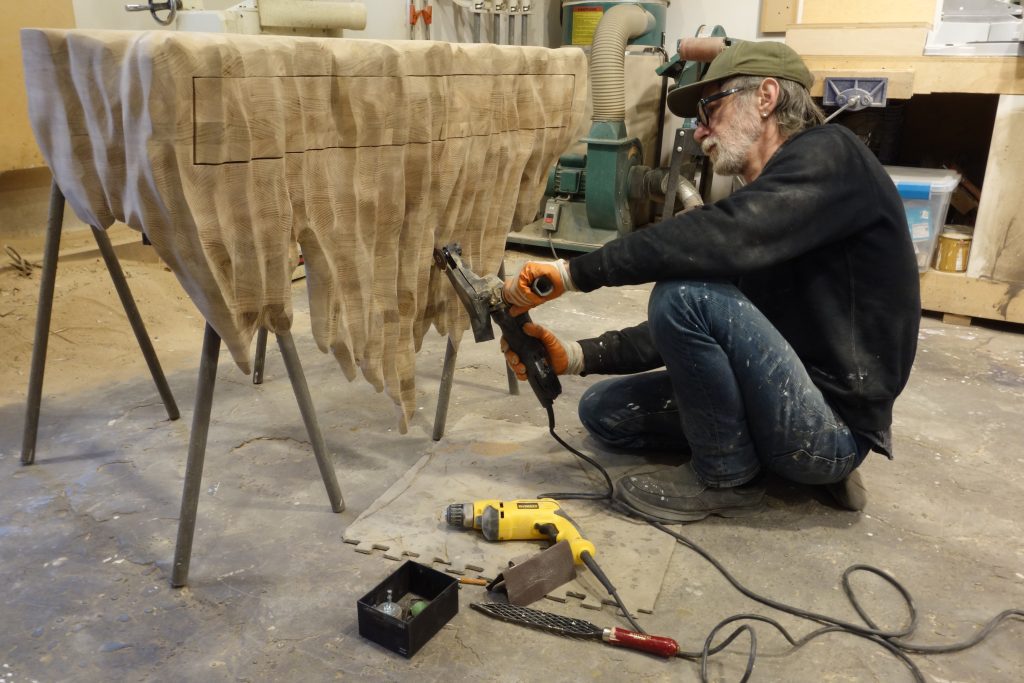

Buşra Tunç: A Multidisciplinary Practice with an Archeologist Approach
At the intersection of architecture, art, and technology, Buşra Tunç emerges as a visionary artist whose work transcends traditional boundaries to create immersive experiences that explore the essence of space, sound, and materiality. With an innovative approach that blends the tactile with the momentary, Tunç’s creations invite us into a realm where the past and future coalesce, challenging our perceptions and encouraging a deeper engagement with our surroundings.
This article delves into the mind of Buşra Tunç, uncovering the philosophies, processes, and inspirations behind her captivating installations. Through a comprehensive interview, we gain insight into how errors in machine production inspire her, the role of industrial materials in her work, and the intricate balance between commissioned and personal projects. Tunç also shares her thoughts on the influence of Istanbul and Turkey on her artistic practice, the importance of site-specific art, and her visionary plans for the future. Join us as we explore the layers of meaning and innovation in Buşra Tunç’s work, a testament to the transformative power of art in shaping our perception of space and light.








Can you describe your interest and approach to the mistakes and accumulations in the machine production process?
My focus lies in exploring accumulations and errors that occur within the machine production process. These mistakes often result in leftover materials and imperfect outcomes, which don’t conform to the intended final product. I am deeply interested in observing the machines, the places they are housed, and particularly the residual materials like metal and plastic that result from this process. These materials, despite being ‘mistakes’, present themselves in various forms, offering a unique perspective on production.














How do materials like aluminum and plastics influence your work?
Materials such as aluminum and plastics are significant in my work. I study them not only in their typical forms but also as byproducts of industrial processes. For instance, a combination of aluminum and other metals often yields interesting byproducts, which I find fascinating. Transparent and colored plastics are examples of direct outcomes from machines that I incorporate into my artistic practice, lending an artificial, yet organic quality to my work.








Could you elaborate on how your art and design practice intertwine with architecture and sound?
In my work, architecture, visual art, and sound are intertwined to create a unique atmospheric experience. My approach starts with a specific space, and I build my idea around it. Whether it’s altering someone’s experience through light, sound, or even changing the humidity of a space, I aim to transform small pieces into a comprehensive piece. This characterizes my work and makes each project distinct.
What is your process for creating art? How do you balance commissioned projects with personal art projects?
My creative process is quite fluid and open to change. I do not adhere to static systems as inspiration can lead to modifications in the idea or the formation. Typically, the process begins with a general idea, followed by extensive experimentation with various materials. Balancing commissioned projects with personal art endeavors involves managing them concurrently to avoid having to choose between the two. This approach ensures that my personal research projects receive equal attention and development.




How do the context and history of a space influence your art projects?
The context and history of a space are crucial influences in my art projects. I find it essential to work site-specifically, drawing inspiration and references from the space’s history. This approach involves understanding the reasons behind the construction of a space, its surroundings, and even the sociocultural context of the area. Such a holistic and contextual approach allows me to create art that is deeply connected to its environment.






How do you incorporate technology and innovative techniques in your installations?
Technology and innovative techniques are integral to my installations. My process starts by thinking about the idea together with the technique. Then I explore the most suitable technological means to realize it. This often involves using kinetic systems, motors, projections, and other advanced techniques. For instance, in my project ‘Experiment I’ where I aimed to create light that resembled a piece of fabric, the challenge was to make it appear digitally created, yet it was achieved through analog means. This blend of technology and artistry is a hallmark of my work.
How do you build your collaborative teams for large-scale projects?
For large-scale projects, I build collaborative teams based on the project’s specific needs. After determining the creative direction, I assemble a team of professionals capable of bringing the idea to life. This collaborative approach is often necessary for handling complex technical systems and ensuring each aspect of the project aligns with the overarching concept. My role is akin to an orchestrator, bringing together diverse skills and talents to create a cohesive artistic expression.






How do you perceive the influence of Istanbul and Turkey in your work compared to other cultures and countries?
Istanbul and Turkey serve as profound sources of inspiration in my work, unparalleled by any other place. The richness of production, the availability of workshops ranging from small to medium scale, and the familiarity with the local scene greatly influence my artistic endeavors. Contrasting this with my experiences in cities like Paris, where finding craftsmanship and production facilities was challenging, Istanbul’s accessibility and richness stand out. The city’s vibrant production landscape enables a seamless blend of professional and artistic pursuits, allowing for a more dynamic and immediate creative process.








Could you discuss the interplay between material, space, and history in your projects?
My projects often involve a deep interplay between the material, space, and history. For instance, one of my significant works ‘Scratch’ involved a historical building where the subtle scratches on the walls, initially appearing ordinary, revealed a rich narrative upon closer inspection. These marks, made by workers centuries ago, held symbolic significance, indicating their community origins. This discovery inspired me to delve deeper into the history and context of the space, influencing the artwork’s direction. Such projects underscore my approach to treating each space as an archaeological site, where layers of history and materiality intertwine to form the artwork’s foundation.






What future directions do you see for your practice, particularly concerning public installations and the use of light?
Looking ahead, I am inclined towards creating large-scale public installations, with a growing interest in experimenting with light in new ways. My relationship with light is evolving – from using it as a dominant character in my works to exploring its democratic aspects. I am intrigued by concepts like the distribution and accessibility of light, its cultural implications, and its role in societal structures. This shift marks a transition in my practice, where light is a subject of exploration in itself, reflecting broader social and cultural themes.
How do you navigate the practicalities of working in different cultural contexts, such as Istanbul, Tokyo, and potentially New York?
Working in different cultural contexts involves adapting to each city’s unique creative landscape. In Istanbul, the ease of accessing production spaces and the immediacy of realizing ideas are distinct advantages. In contrast, Tokyo introduced me to new perspectives on light and space, which profoundly impacted my approach. My aspiration to work in New York stems from a desire to immerse myself in a different cultural and creative environment, which I believe will further enrich my practice. Navigating these varied contexts requires flexibility and an openness to incorporate local influences and techniques into my work.










How do you handle the creative process when working on client projects versus personal projects?
Balancing client projects with personal creative endeavors is a nuanced process. My approach is to work on both simultaneously, maintaining a parallel timeline. This strategy prevents the need to choose one over the other, ensuring both receive adequate attention and development. I manage my time effectively and assemble teams based on each project’s requirements. For instance, housing projects might have a dedicated team, while I delve into personal research projects independently. This approach allows me to stay engaged and productive across different types of work, ensuring a diverse and dynamic creative output.








Can you elaborate on your approach to site-specific art and its connection to the history and environment of a space?
Site-specific art is central to my practice, with a keen focus on the history and environment of the space. Each project begins with an in-depth exploration of the site’s history, seeking to understand its original purpose, the cultural context, and its physical surroundings. This holistic approach informs the conceptual development of the artwork, ensuring that it resonates with the space’s intrinsic qualities. By integrating elements from the site’s history and environment, my art becomes an extension of the space, creating a deeply contextual and immersive experience.










How does the concept of preservation and transformation feature in your work, especially in relation to light and materials?
Preservation and transformation are recurring themes in my work, particularly in relation to light and materials. I explore these concepts by repurposing materials and reimagining their use in new contexts. For example, in my project ‘ÄTHER’ at the Goethe Institute, I focused on preserving the essence of fluorescent lights, a medium facing obsolescence. This led to the creation of installations that capture the transient beauty of these lights, transforming them into artistic expressions. Similarly, I often work with materials destined for waste, giving them new life and meaning through artistic reinterpretation. This process of preservation and transformation challenges conventional perceptions of materials and light and reflects a deeper commentary on sustainability and the impermanence of our physical world.






How do you envision the future of your practice, particularly concerning public installations and exploring new concepts?
The future of my practice is oriented towards larger-scale public installations, with an emphasis on exploring new concepts and mediums. I am particularly interested in further developing my work with light, shifting from using it as a primary visual element to a more conceptual exploration of its cultural and social implications. This includes investigating themes like light accessibility and its democratic distribution within urban spaces. By focusing on such broader societal issues, I aim to create installations that engage the public visually and provoke thought and dialogue about the role of light in our lives and communities.
Buy into the immersive universe of Buşra Tunç
-

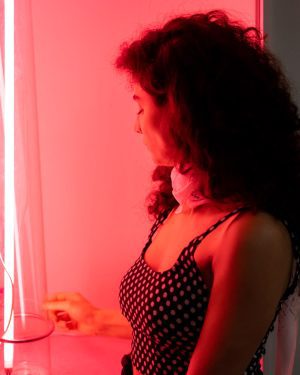 In stock
In stockÄther
€850 -

 In stock
In stockÄther Lucifer
€500 -

 In stock
In stockÄther Seul
€325 -

 In stock
In stockÄther Twins
€800 -

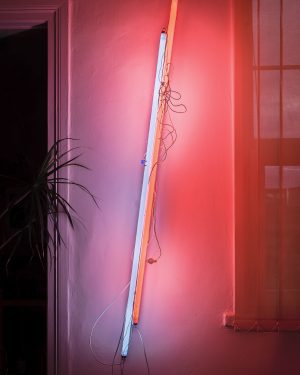 In stock
In stockExtreme I
€280 -

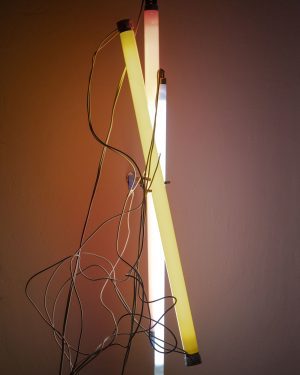 In stock
In stockExtreme Il
€238 -

 In stock
In stockIron And Steel Life Cabin Vase A
€140 -

 In stock
In stockIron And Steel Life Cabin Vase B
€130 -

 In stock
In stockIron And Steel Life Cabin Vase C
€180 -

 In stock
In stockIron And Steel Life Cabin Vase D
€220 -

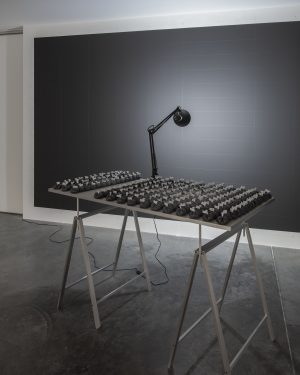 In stock
In stockT1: Span Table
€2.500



